 A lot of people are interested in learning about herbs but don't know where to start. Given the difficult of finding good quality information, we've tried to make it easier for you by helping you narrow it down: Why Use Herbal Remedies? In general, most herbs provide a safe, effective and affordable ways to support health. In all human cultures, herbalism has played a central part of health for millennia. Any person only has to look back as far as their own grandparent or great-grandparent to find a family history with herbs if they didn't grow up with herbs themselves. What do you need to know?
Let's break it down... 1. What herbs are the most effective for me or those I care for? The easiest, quickest and most effective way to answer this question is to talk to an herbalist. Herbalists help you find the answers you're looking for by talking with you and assessing your individual needs. But if you want to learn more in general there are other options: Free online resources
Paid online resources - classes and more Books Beginner
Intermediate/Advanced
Herbal medicine schools
2. How do I know it's safe for me or the ones I care for? Many herbs are very safe for many people. However, not all herbs are safe for all people. Some herbs that are easy to come by may be poisonous in large doses even for healthy individuals. However, these herbs are somewhat rare in commerce. The best answer to this is again to talk to an herbalist, and/or to talk to your doctor. Most of the above resources on herbs should give general guidelines for safety, however there are certain situations where extra caution must be taken, including the following (those this list may not include all cases where extra caution is needed):
In all cases, but especially these cases, it's best to talk to someone with the knowledge and experience to help guide you. For medication interactions there are various online interaction checkers such as drugs.com or WebMD. These may help to identify any common red flags, however they are missing a lot of herbs, and a lot of information in general. This book is a decent quick reference guide for herbs and safety, though is not the most recent: 3. How do I prepare the herbs? Most herbs are easy to take, either as an herbal tea, tincture, powder or capsule. However there are a few foundational things to learn, as well as a lot of options out there for more interesting preparations. Free internet resources Paid internet resources (classes and more)
Books 4. How much do I take, and for how long? Dosage information is one of the harder pieces of information to find reliable sources for. Here's what we've come across and believe is good information: Free internet resources Books Intermediate/advanced
Conclusion There's a lot of information out there - we hope this is a good place to start. Let us know if you have any questions! Know anyone that might be interested in this information? Please share! Thanks!
0 Comments
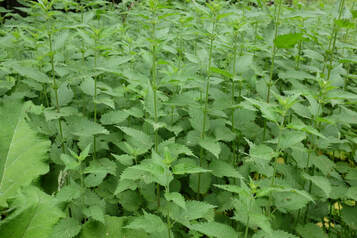 For most people with prostates, dysfunction in this small organ will lead to uncomfortable symptoms late in life. This becomes more common after around age 50, but may occur much earlier, and is almost universal after age 80 or so. For those that may not know (many people it turns out!), the prostate is a small, walnut shaped organ between the penis and the rectum. The urethra passes through the prostate. A major function of the prostate is to secrete fluid which nourishes protects the sperm during ejaculation. Prostate conditions The most common medical conditions associated with the prostate are: Benign Prostatic Hyperplasia - BPH
Protatitis
Prostate cancer
General support for the prostate Prostate conditions may develop in conjunction with higher circulating amounts of insulin or chronic inflammation. If either of these two are present, then addressing those may ultimately help with prostate health as well. Physical support Too much sitting can be harmful to prostate health, both due to the inactivity as well as pressure on the perineum. Here are some ideas for how to address this: Sitting
Movement:
Dietary support Diet is very individual, and dietary recommendations will vary from person to person, however here are some general guidelines: Increase:
Avoid/reduce:
Herbal support For support of the prostate and surrounding organs there are a few possibilities: Urinary support
Conclusion The prostate is a little understood but important gland. People with prostates are at risk for developing urinary symptoms or other problems in the later stages of life, but there is a lot that we can do with simple lifestyle changes to preserve the health of this organ. Please share with anyone you think would benefit! Thanks for reading! By Nick Cavanaugh References
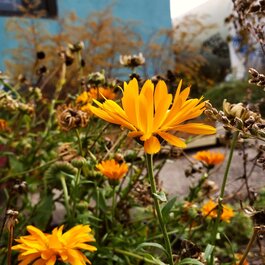 Calendula Calendula is such a fun and beautiful plant to grow! It grows very easily from seed and often self-seeds itself, coming back year after year. And the wonderful thing is the more you harvest the flowers, the more it grows! Medicinal benefits: Use the fresh flowers to make an infused oil. This can be applied externally on its own or made into a salve to moisturize and heal the skin. The flowers can also be made into tea for internal healing, supporting the lymphatic system, and for brightening the mood. How to grow: Direct seed into the garden or containers int the spring. 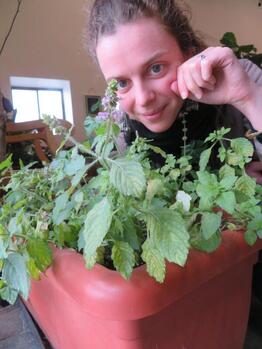 Tulsi Tulsi is another favorite for growing at home. Related to culinary basil, tulsi is also known as "Holy Basil" because it is highly revered in India where it is from. The leaves and flowers grow plentifully, and similar to calendula the more you harvest the more it grows - simply trimming back the plant a few inches at the nodes will cause it to grow out rather bush-like, making just a few plants enough to supply a small household. Medicinal benefits: Dry the leaf and flower to make an uplifting, aromatic tea that supports a positive outlook, supports the immune system, and has "adaptogenic" effects - helping our body adapt better to stressors. How to grow: Start seeds indoors in the spring, or direct seed into the garden. 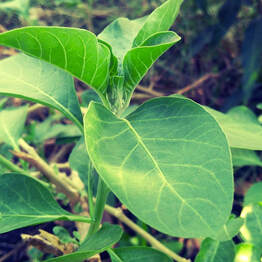 Ashwagandha Ashwagandha is another well-known "adaptogenic" plant famously used in Ayurvedic and Unani medicine in India. It's similar to ginseng in its properties, though in an entirely different family and much easier to grow. Though it grows as a perennial in the wild in warm climates of Asia and Africa it can be grown as an annual even in cold places like Vermont. Medicinal benefits: Harvest the root and dry for making a strong herbal tea (decoction) or tincture. Traditionally it's consumed as a powder, though it can be difficult to powder without the proper tools. Taken daily for a short period of time it can promote deep restful sleep and help to rejuvenate the body with more energy. How to grow: In cold climates like Vermont it must be started indoors many weeks before the last frost date, and transplanted only after all danger of frost has passed. Some herb farms may have starts available. Harvest the root in the fall close to or right after the first frost. 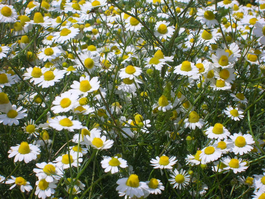 Chamomile Chamomile is such a wonderful plan that we love for many reasons! A nice warm cup of chamomile tea is such a relaxing treat for any time of day, but especially for unwinding in the evening. Chamomile is another self-seeding annual, that tends to spread, so once it's well-established you'll have chamomile as long as you'd like! Medicinal benefits: Chamomile can help to soothe the digestive system, while also relaxing the body as a whole. It also has noticeable mood-uplifting effects, making it quite a delight! Dry the flowers for making into a hot tea any time of year. How to grow: Direct seed in the spring while it's still cool. Find Seeds Looking for seeds or starts? Order seeds online or check out our Plant Sale + Seed Swap on May 28th, 2022! Happy growing! Written by Nick Cavanaugh 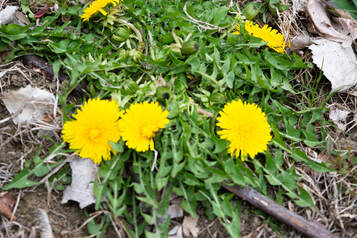 This time of year there are so many fun plants coming up! Here are some that are fresh and ready for wildharvesting. Please make sure to harvest plants respectfully: only take what's needed, and not more than 5% of the plants you see. Also only harvest if you're 100% sure of the identification, and if you're sure the location is free from pollutants. Dandelion is one of our favorite spring plants - so abundant, and so wonderful for many things! Dandelion leaf: Harvest ideally before flower or early in the season (gets more bitter as time goes on). Cook the greens as you would spinach. To reduce the bitterness you can cook in water then discard the cooking water. Supports digestion and kidneys. Dandelion root: Harvest soon or in the fall. Dig out the full, deep taproot. Chop into small pieces, dry and use for making an herbal decoction (simmer ~1 tsp. in 1.5 cups water on low heat 10-20 minutes). Makes a good coffee substitute and supports the liver). Dandelion flower: Yummy to batter, fry and make into fritters! Dandelion wine is another more involved option. 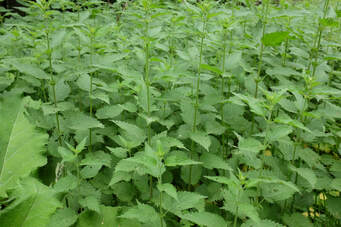 Nettle! One of our other favorite spring herbs. Don't be alarmed by the sting of stinging nettle - it's de-natured upon drying or cooking in water. But harvest either very carefully, or with gloves! Nettle leaf: Collect the leaves before the plant has gone to flower and cook into soups or by simmering in water for 5-10 minutes. Can make into pesto. Or dry the leaves and use 1-2 tbsp. per cup of water, steep as an overnight infusion. Very high in vitamins and minerals, supports kidneys and skin. 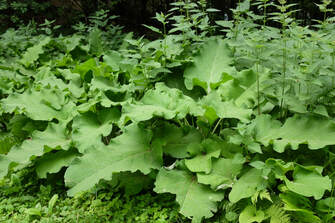 Burdock! This massive plant has a super deep taproot. If you are able to find young plants that haven't begun to grow their flower stalk then you can harvest them, or in the fall when the young plants first come up (don't harvest roots from mature plants with flower stalks or seeds). Burdock root: Get a good shovel to get this deep taproot! You can cook it as a vegetable in stir fries or soups, or chop into bits, dry and make a decoction (simmer 1 tsp. in 1.5 cups water for 10-20 min.). Supports liver, digestion and skin health. 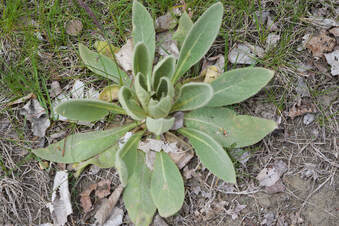 Mullein! This plant can be harvest either early spring, or in the fall. Harvest leaves when it's still like this photo, hasn't begun to produce a flower stalk. Mullein leaf: Harvest and dry these wonderful fuzzy leaves and make a tea with 1 tsp./cup hot water, steeped 10-20 min. Soothes a dry irritated cough. Happy foraging and let us know if you have any questions! Written by Nick Cavanaugh. 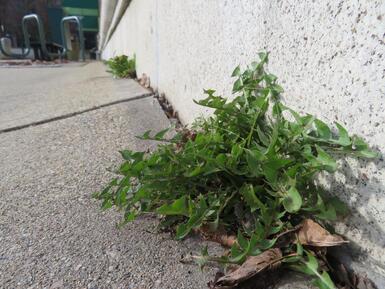 Traditionally, the days around the Vernal Equinox (mid to late March) and the month(s) after it were seen as a time of intense, rushing energy: days get longer and the sunlight more intense, the first signs of green growth emerge, and wildlife stirs again. Herbalists still consider this a time when the more inward, ‘congealing’ energies of Winter begin to transition into the more outward, ‘expansive’ energies of Summer – and when a little attention paid to the process can improve vitality, strengthen digestion and immunity, and keep us in tune with the changing seasons. There are specific herbal allies that have gained a deserved reputation for aiding in this transition, and each has its own peculiar “virtues” and affinities. All, however, rely somewhat on two basic strategies: either enhancing digestive and eliminative function, or bolstering the power of the body’s immune and hormonal systems. Some do both! And generally, it was (and still is) considered a good idea to start with enhancing absorption and elimination, and then proceed with strengthening the underlying physiology. The old recipes for “root beers” can be somewhat instructive in this regard: they often feature a combination of bitter roots (which enhance elimination) coupled with aromatic, sometimes pungent ingredients (which improve digestion) and hormonal tonics (to enhance energy and vitality). Many of the herbs and botanicals listed below can be combined along these lines to make a customized spring tonic for yourself or your friends and family, helping to ride along the tides of Spring and get ready for Summer. The last detail in the herbalists’ crafting of vernal concoctions is an attention to the constitution and physiological peculiarities of the individual using the tonic. Generally, these are pretty obvious considerations – but one point to remember is to try to add “cooling” herbs for those expressing signs of overactivity, heat, and inflammation; and “warming” herbs for those showing signs of sluggishness, depression, chill, and frequent infections. Often eliminative herbs are more cooling, and tonic herbs more warm. Botanicals listed below have their traditional energetic value added as a start in this process. Tree sap Often from maples (Acer saccharum, and other species), the sap of Birches (Betula spp.) can also be used. I like to use the unheated, unfiltered sap as a tonic all by itself: this “tree juice” provides unaltered enzymes as well as sugars and minerals ready for optimal absorption. It can also be used as a base for decocting (simmering) some of the roots and barks described below. Usually, a pint to a quart daily is consumed – though more is not necessarily a bad thing! Alternatively, you can reconstitute a similar liquid by using about a tablespoon of maple syrup per pint of spring water. Burdock (Arctium lappa) This root, generally cooling in energy though somewhat tonic too, can be eaten as one would a carrot, or simmered into a tonic brew. It is best suited for those with dryer skin, and perhaps an underactive appetite. Its chief traditional use is for acne and other skin complaints. Use about 2 TBS per pint of water, along with other herbs. Dandelion (Taraxacum officinale) A true remedy that synergizes well with herbs for almost any ailment, Dandelion is a catalyst for change that gently and safely enhances digestive and eliminative function. When in doubt, this is the root to pick! Its yellow flowers remind us early on that it’s time to pay a little attention to our bodies this time of year. The root’s energy is somewhat cooling, and it enhances detoxification through the liver, helping to resolve gassiness and sluggishness that may have accumulated after a winter of congestive, thick foods. Use about 2 TBS of chopped root per pint of water. Yellowdock (Rumex crispus)These roots are more bitter, and are best for those who might have a tendency toward constipation. They combine well with any of the other cooling, bitter roots and improve liver function and elimination. Generally, I suggest using Yellowdock for shorter (1-2 weeks) periods than Dandelion or Burdock, but it is still quite a safe plant. 1 TBS of chopped root per pint is usually adequate to relieve somewhat sluggish digestion. Echinacea (E. purpurea, E. angustifolia, and others) This is a cooling, dispersive root that posesses a good degree of pungency as well. Its chief use as a springtime tonic is to help boost immunity, especially if there are or have been any swollen glands or recurrent respiratory infections associated with winter illness. It can also help dry, scratchy throats that sometimes linger into spring. While I often recommend an extract, the roots are excellent too provided they are simmered for a little while (10-15 minutes). This time of year the plants are just starting to poke up from the soil, making it easy to find and dig out of the garden. Use 2 TBS of chopped root per pint of water. Wild Sarsaparilla (Aralia nudicaulis)An abundant relative of Ginseng, this plant posesses starches and bitter saponins that counteract fatigue and gently warm the system to enhance vitality and elimination at the same time. It also has hormone-balancing effects, especially in relation to stress hormones, making it a good adjunct for those who have intense work or personal lives, or who rely heavily on stimulants. It is a little difficult to recognize and find early in the season, before the greens emerge, so marking it out in the fall can help with digging the long rhizomes in the spring. Use a piece or pieces of rhizome about the length of your index finger in a pint of water. Spikenard (Aralia racemosa)Another Ginseng relative, this is a sweet, spicy and warming root that is most indicated as a tonic for hormonal and respiratory function, particularly for those with chronic lung congestion. Use only 1 TBS per pint – it is a potent ally. Dwarf Ginseng (Panax trifolius) Also called groundnut, this is a nourishing and rebuilding tonic that is somewhat rare in the wild, so it should be used judiciously. It flowers early in the spring, and though only a few inches tall, packs a flavor and power that is quite excellent for warming deficient constitutions that have become sluggish and undernourished over winter. If you find a good stand of it (make sure you have the correct plant ID!), you can have one corymb (a round, underground “bulb” attached to a delicate white root) two or three times a week eaten raw, straight from the forest floor, or simmered into your tonic brew. Goldthread (Coptis canadensis) This is a very bitter, cooling, detoxifying and anti-inflammatory plant that you really don’t need a lot of. It chief indication is chronic inflammation, perhaps also involving the skin, and a more “oily” skin pattern that could benefit from drying. It enhances digestive function when taken before meals, improves sluggish bowels, and clears heat that settled into joints and muscles over the winter months. Some have reported an improvement in allergies and sensitivities. It is also evergreen, which makes it easy to find even under a little snow cover! Its thin rhizome is bright yellow, and the above-ground greens are useful too. Use one to two plants (4-5 inches of root total) per pint of tonic brew. Sarsaparilla (various Smilax species) Not a local Vermont plant, the root bark from this vine is still such a classic spring tonic that it bears mention. It has a distinctive, warming and spicy flavor that, while enhancing digestion, is most powerful at adjusting hormonal balance (thyroid, adrenal, and reproductive hormones) and I have always found it useful for stubborn skin conditions such as eczema and psoriasis (often worse after the dry indoor heat of winter). Sarsaparilla has a strong flavor, so experiment with taste until you find what you like. It is usually available at the herbs store; start with ½ to 1 TBS per pint. Sassafrass (S. albidum) The FDA doesn’t appreciate the use of this bark anymore, due to its safrole content, which is considered carcinogenic. Its distinctive spicy/sweet and warming flavor and energy make it perhaps the most classic “root beer” ingredient, evoking memories of times when there brews were actually made from plants… And, for a few weeks each spring, consuming sassafrass provides such a negligible amount of safrole that, truly, doesn’t compare to pumping gasoline in terms of cancer risk. I would use about 2 TBS of dry bark per pint of brew, but I really like the flavor. Experiment and add to taste. Cleavers (Galium aparine) This green, as well as its cousin sweet woodruff, comes out a bit later in the spring but makes an invaluable cooling tonic for folks who are prone to swelling from chronic inflammation, edema, or water retention. They can be juiced and an ounce of juice taken as a daily tonic, or steeped into a more complex tonic after roots have been taken off the fire. Use about 2 TBS of chopped herb. Nettles (Urtica dioica) Though green, this herb is actually a bit warming and drying. It is great for those who show signs of water retention (sometimes evidenced by a swollen, “scalloped” tongue), or those in need of iron and other nutritive minerals. Finally, its mildly detoxifying qualities can help in seasonal allergies. Herbalists use the young, fresh leaves in soups or steeped into an herbal brew after the roots are done simmering – about 2 TBS or more of chopped leaves per day. Dandelion greens (Taraxacum officinale) We would walk through the meadows, before they fully became green with grass, looking for the young rosettes of dandelions and collecting them whole, along with the crown of the root. Back home, my aunt would dress them with olive oil and wine vinegar, for an abundant (though bitter) spring salad. These greens improve digestion, enhance elimination through the kidneys, and are loaded with important minerals. Their reputation for cooling overheated constitutions extends to the cardiovascular system. They are excellent eaten fresh as part of salads or wilted in soups or stir-fry; alternatively, steep 2 TBS of chopped leaves into an herbal brew after the roots are done simmering. Mustard greens (Brassica species) There are a wide range of mustards that come up quick in springtime, since they are so tolerant of late frosts. They are warm and spicy, wake up the digestion and liver, and additionally contain compounds that show much promise in preventing and treating cancer. Of course, they are best as part of a wild food salad, or cooked in soups (though they lose a lot of pungency if cooked). I don’t normally brew these into tea. Wintergreen (Gaultheria procumbens) This is a very aromatic and cooling plant, rich in anti-inflammatory salicylates and endowed with wonderful flavor, another aroma often found in classic root beer preparations. It is a good digestive normalizer, especially if there is a lot of gas, bloating, and irritation; it can also help with chronic inflammatory conditions of the joints and back especially if these get worse over the more sedentary winter months. Steep 5 or 6 fresh leaves in 8oz of herbal brew, covered so as to not lose the volatile aroma, and do not boil! Birch bark (Betula species) The black birch is perhaps the most flavorful, but the bark of any species yields a wintergreen-like essence that is similarly cooling, and much more readily available. Use a good handful of crushed bark (perhaps a cupful) per pint of water, and add it to your brew for the last two or three minutes of simmering. A note on preparation Many of the plants mentioned above release their medicinal constituents during a process of light simmering, known as “decocting”. The resulting brew is often called a “decoction”. It is best accomplished by simmering the herbs in a stainless steel container, covered, for 15 minutes or so on low heat. Afterwards, the brew can be removed from the heat and more delicate greens added and left in the pot, covered, for another 10-15 minutes or so. Finally, strain the brew and drink immediately, or bottle for 1-2 days. Written by Guido Masé RH(AHG). Read more about Guido's work in our herbal clinic here.
By Nick Cavanaugh
During the springtime many people start experiencing seasonal allergies. And many others experience allergies year-round. What are the underlying reasons for these allergies, and what are the options for relief? I'll be exploring these questions in this article. I hope it's helpful - please reach out if you have any questions! What are allergies? Allergic rhinitis is an inflammation of the lining of the nose, usually characterized by one ore more of:
Perennial (year-round) allergies may be due to dust, mold, cockroaches or animal dander.[1-2] About pollen, mold and other allergens Respiratory allergies are often triggered by:
In Vermont, during "mud season" (the bridge between winter and spring), the dampness could lead to mold growth and mold allergies. Increased rainfall, humidity or flooding could contribute to this.[4-1][5] However, in many areas mold growth typically peaks in the summer due to the combination of both heat and humidity, especially the Midwest and Southeast U.S..[6][5-1] A damp autumn could continue to spur mold growth, though cold temperatures decrease mold activity and mold tends to become most dormant during the winter.[5-2] If you believe you may be sensitive to mold and are exposed to it, addressing this with indoor air quality is very important. Why do people get allergies? Allergies are basically a hype-reactivity of our body's immune systems. Ordinarily a strong immune response keeps our body healthy, but an over-activity to allergens causes harmful and uncomfortable inflammation in the nasal passageways. Herbalists have some unique insights into why allergies may be relatively common in our modern day-and-age:
An herbalist's view - herbal energetics and allergies From the herbalist perspective, symptom patterns can be differentiated in terms of patterns that correlate with key "energetic" states, especially heat, cold, dampness and dryness. In Unani ("Greek") medicine (also known as "Tibb") allergic rhinitis results from an excess of heat, which is either with dampness or dryness. This leads to irritation and inflammation in the mucous membranes.[2] Herbalists typically assess energetics of symptom patterns through various means, and we recommend speaking with an herbalist if you'd like to find out what pattern matches your experience. It can be especially helpful to get an outsider's perspective given that often symptoms can point to patterns in conflicting or confusing ways. However, for a general overview, these are some common associations with upper respiratory symptoms as detailed by herbalist Jim McDonald in an excellent article on sinus health: Signs of dampness:
Signs of dryness:
Signs of things being stuck and stagnant, more of a chronic condition, i.e. chronic sinusitis:[10-8]
To address these various symptom patterns, herbalists may incorporate some of the following (again as detailed by Jim McDonald, mostly): How to address dryness:
How to address dampness:
Remedies for stuck and stagnant states:
Natural allergy relief with home remedies The following are general suggestions. We recommend speaking with an herbalist for individual support and guidance. Tend to the indoor air environment and reduce exposure
Make dietary changes According to Mills and Bone in their authorative Principles and Practices of Phytotherapy "herbalists believe that diet can create a state of hypersensitivity and catarrh of the mucous membranes that predisposes to rhinitis." [1-3] Possible dietary factors could include:
Dietary steps to take
Use topical remedies
Seek ways to de-stress and get good sleep These can go a very long way in reducing allergy symptoms. Talk to an herbalist if you need support. Herbs to support our bodies Ideally someone would start their remedies 6 weeks before the season starts and continue it through the season.[1-6] We strongly advise talking to an herbalist for individual advice on how to support your body during allergy season. These are some of the ways herbs are used: Healthy mucous membranes Mills and Bone state that "traditional herbalists have stressed the importance of healthy upper respiratory mucous membranes." [1-7] Demulcent herbs such as marshmallow can help to soothe dryness and irritation in the upper respiratory tract. Astringent herbs such as elderflower can help to dry up copious nasal discharge. Immune support Immunomodulating herbs such as reishi mushroom can help to modulate the immune response over time, helping to prevent either under or over-activity of the immune system.[8-1] Reishi is not advisable for some individuals: talk to an herbalist for advice. Support detoxification pathways Herbs such as nettles, dandelion and burdock can help to support our body's natural detoxification pathways, i.e. through the lymphatic system or liver, and this in turn can help reduce background levels of inflammation and promote clearing of foreign substances from the body. Medical treatment for allergies From the herbalist point of view it's better to address underlying causes rather than symptoms. However, when needed there are a number of medications that can help. Over the counter medications can help relieve allergy symptoms:[11]
When to contact a doctor:[11-1]
Closing Sesonal allergies can be tough - I hope this has been helpful information for you! Please contact me with any questions, and feel free to reach out if you'd like to schedule an herbal consultation. Be well! By Nick Cavanaugh. Nick is a clinical herbalist at Railyard Apothecary. Learn more about Nick and other clinicians here. References
If you experience digestive difficulties you know that you're not alone. But why? Why are digestive problems so common in our modern culture? It is easy to point to the obvious - lack of access to healthy food on the one hand, stress and other lifestyle factors on the other. But there may be something deeper, that goes back to the way we see ourselves, our bodies and our food... Modern view: body as machine The modern view of the human body has origins in 17th century Europe with the development of the mechanistic view of the body by René Descartes. In this view, the whole = the sum of the parts, not more, and there is not an inherent way to draw connection between those parts. This view has benefits and drawbacks. The benefits include all the miracles of modern medicine, in which the molecular causes of so many disease have been discovered, for which we can be grateful. The drawbacks in terms of digestion include that food gets reduced to the raw nutrients it contains, and digestion to the simple receptacle into which these nutrients are deposited. What is missing is the complex world of our senses and bodily experience, the integration of the parts and the whole, and the dynamic interaction that humans constantly experience in relation to our living environment. Traditional view: body as an integrated whole Prior to the mechanistic view, the predominant view in relation to health and medicine was that of philosophers going back at least to Ancient Greece. The body was seen to be animated by a subtle substance called "pneuma" that is akin to "qi" of Chinese Medicine and "prana" of Ayurveda. This pneuma moved through the organs from the power of the three "faculties," including the "natural faculty" or "nutritive faculty" that influenced digestion. The processes of digestion, metabolism, and elimination were seen as being interconnected, not separate, and together formed the "natural faculty." If we look at things from this bigger picture, more holistic and integrated view, we can make connections between things which otherwise are not clearly related in the mechanistic view. For example:
Learn more in our digestive health class series starting Wed., February 28th, 2024
The qualities of nature in all things
In addition the human body, there was a way in which all of nature could be seen as an integrated whole. All of the universe was seen to be created by four elements, and these four were then defined in terms of their qualities of heat and moisture:
These qualities can be perceived by our sense organs. In terms of food, the way we can identify the qualities in them is quite natural:
But with a little more reflection, more is obvious:
Putting it together - diet and the qualities of nature By seeing the human being as an integrated whole, which shares common characteristics with all of nature, including the foods we eat, we can begin to see a different way of interacting with food to keep our guts and bodies healthy and happy. What is the best food any particular person at any given time can then related to:
Geography Every place has its own unique climate. The good news is that every place has its own local food. To start with then, eating locally is the easiest way to eat food that aligns with the energy of that particular place. In Vermont, for example, we have a climate which is colder than a lot of other places. Therefore, to balance that out, for most of the year except for the heat of summer it's best to eat warming foods, such as:
Season Every place also has its own version of seasons. Classically, the association is as such:
Keep in mind though the geographic variations here. For example, in Vermont the winter is so cold that the air becomes very dry, which is compounded by indoor heating, so in Vermont what's needed in the winter is warm and moist foods. Age Traditionally, the ages of life have their own qualities:
Individual temperament There is of course so much individual variation, and this is where understanding one's own nature, or temperament is important. Traditionally there are four:
Conclusion To sum it all up, we can say that if we take a more traditional approach to seeing the human body as an integrated whole, and to seeing the natural world in intuitive, energetic terms, that can lead us to different choices about the foods we eat. We may find, for example:
Here are some suggestions for further reading: - Greek medicine as practiced in contemporary times as Unani medicine - Greek medicine practiced as Tibb - Western Herbal Energetics and the Four Humors System - Greekmedicine.net Blog post by Nick Cavanaugh. Book a comprehensive wellness consultation with Nick in-person or online here. 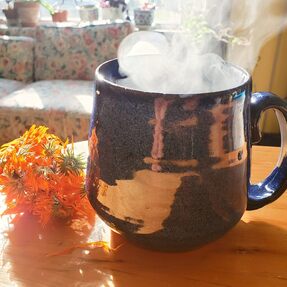 Some tips to stay healthy this winter: 1. Vitality Your immunity is your vitality. What can you do to experience joy, connect with others, make your heart sing? What gives you energy and fills you with inspiration? Seek out those things! 2. Sleep Good sleep is essential, not just for rest and rejuvenation. There are many important immune functions that are optimized during sleeping hours, making sleep essential for a healthy immune response. For adults, this means at least 7-8 hours of sleep per night, or more for certain individuals. 3. Food We are what we eat, and this is especially true when it comes to immune function. To best support vitality and immunity here are some suggestions: eat with the seasons - in winter that means warm food and beverages, i.e. soups and teas. Avoid overeating and leave space between meals - overburdening your digestive system can create mucous and weaken vitality. Eat healthy - more whole foods, less refined sugar and processed foods. 4. Environment Stay warm! Bundle up indoors and outdoors. Try to get direct sunshine whenever possible, for as long as possible. Consider a humidifier if you are prone to dryness. 5. Movement Keep your blood and lymph flowing strong by moving every day, ideally at least 15-30 minutes of moderate exercise. Go outdoors and get fresh air, just bundle up! 6. Herbs + supplements Cook with antimicrobial, warming herbs such as garlic, thyme, oregano or rosemary. Consider a daily immune tonic such as astragalus, reishi or elderberry. Consider immune stimulants such as echinacea when an extra boost is needed. Consider supplementing with Vitamin D during the cold months. Stay well out there, and let us know how we can help! Want to talk to an herbalist? Book a consultation here.  With the holidays upon us many people will be eating quite differently then they usually do. Here are some tips to support digestion during this time: 1. Be easy on yourself This time of year it's just more difficult to eat the way we'd like to to be healthy, and that's ok! Be easy on yourself. It happens. You may eat the thing that your tummy regrets later. The gut-brain connection to huge, and one of the best things we can do to care for our guts is to be kind, gentle and accepting of ourselves, even when we we make choices that we know don't reflect our ideals. 2. Set healthy boundaries with family There's nothing like family for providing pressure around food. We just don't them to feel bad if we say no to their special treat, right? We know it's hard, but accepting the love of your family doesn't need to mean accepting their food. If you know you are sensitive to gluten, dairy, sugar or something else, while knowing that it's quite possible you will slip up on this and that's ok, know that it's also ok to say no if you feel this would be best. Consider taking this opportunity to educate your loved ones about food alternatives, perhaps by bringing along something to share that does fit your needs. You may even help expand someone else's worldview and better their health as well. 3. Use digestive bitters One of the easiest way to promote better digestive for large holiday meals is with digestive bitters. Bitters refer to pretty much any herb that has a bitter taste. The bitter flavor has historically been very common in the human diet, but in the U.S. many people rarely include it. Due to our evolutionary history, simply tasting the bitter flavor stimulates digestive secretions all along our GI tract. This stimulation allows us to better break down and assimilate heavy meals, lessening the chances for discomfort. The easiest way to take bitters is to take 5-15 drops of a bitters tincture blend 5-15 minutes before a meal, or to do the same after a meal. Bitter herbs include dandelion, burdock, yellow dock and gentian. It's good to also include aromatic bitters like ginger, orange peel or angelica. Urban Moonshine makes a line of bitters available at most natural food stores. 4. Drink a warm digestive tea after the meal One of the most enjoyable things after a large holiday meal is a warm cup of tea. The warmth helps to promote good digestion, and if the tea contains digestive herbs this can doubly help. The herbs the are particularly best are called "carminatives." These are aromatic herbs that taste yummy and are particularly good for relieving gas and bloating. Examples include chamomile, peppermint, lemon balm, cinnamon and ginger, or the classic chai tea spices. Brewing up a cup of these herbs after the meal can go a long way in preventing indigestion, and can taste so yummy! Here's an example recipe:
These herbs are featured in our dessert tea, specifically designed to accompany dessert or to BE a dessert all on its own. *Have caution with licorice, this may not be a good herb for some people. 5. Have herbs on hand if you need If things really don't go well, make sure to have on hand your herbal allies that can provide relief. Best to know ahead of time what these are for you, but may include some of the following:
6. Let us know if we can help! We work with people who experience digestive discomfort to regain well-being and to feel better. If you would like some personal guidance on supporting your digestion, be in touch! Learn more here. Article by Nick Cavanaugh, clinical herbalist at Railyard Apothecary 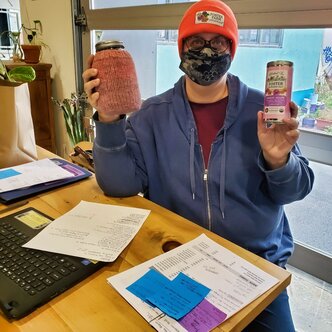 Holidays are coming. It's still a pandemic. Plus, you know, all the things. Here's 3 ways we use herbs to help deal. 1. Drink a relaxing herbal tea throughout the day.
2. Start your day with an uplfiting or adaptogenic herbal powder blend.
3. Take an Herbal Tincture an hour before bed to unwind and prepare for sleep Tinctures are generally a fast-acting way to take herbs. There are many relaxing herbs that can have a somewhat sedating effect in larger quantities (do not combine with alcohol or sedative medications). Taking one of these herbs in tincture form before bedtime can help calm the mind and body and prepare for a more restful sleep. Herbs that work well
I sincerely hope this blog post helps you find more ease during stressful times. Want to talk with me about you can herbs to support your individual situation? Book a free 15-minute info call with me to learn about our herbal consultations here. - Nick Cavanaugh Clinical Herbalist at Railyard Apothecary |
Details
RAILYARDCheck in here to keep updated on news and activities at the apothecary. Archives
April 2024
Categories
All
|
railyard apothecary
*These statements have not been evaluated by the Food and Drug Administration. This product is not intended to diagnose, treat, cure, or prevent any disease. For educational purposes only.
|
|
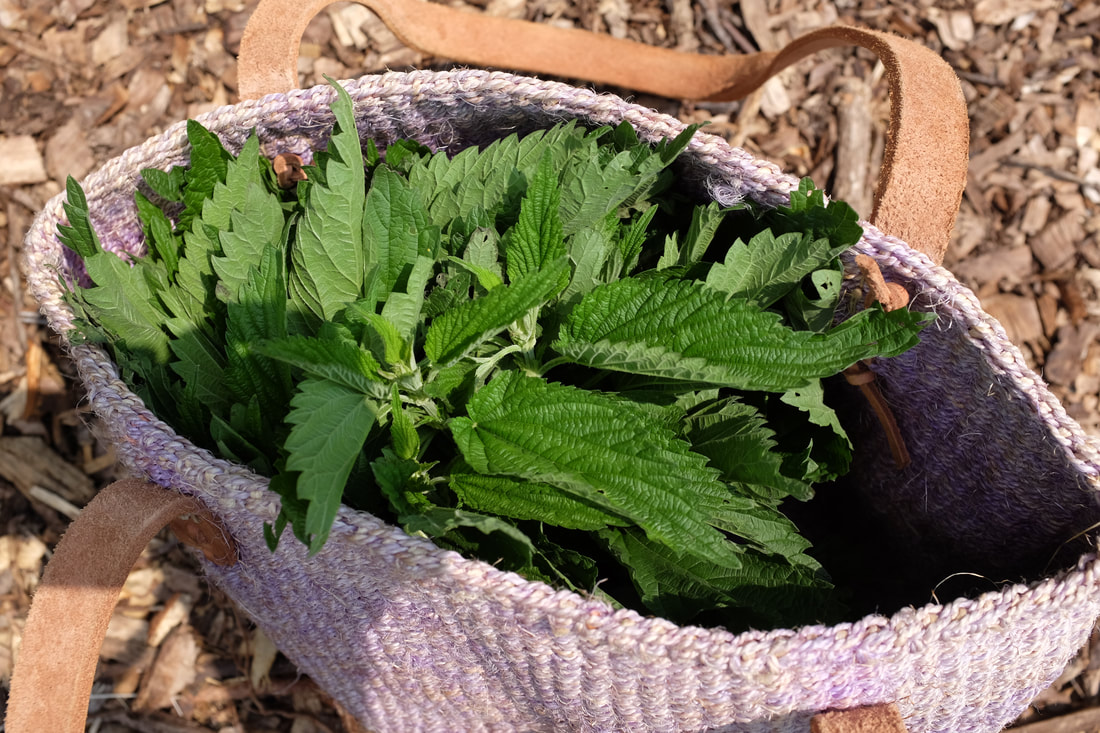


 RSS Feed
RSS Feed
